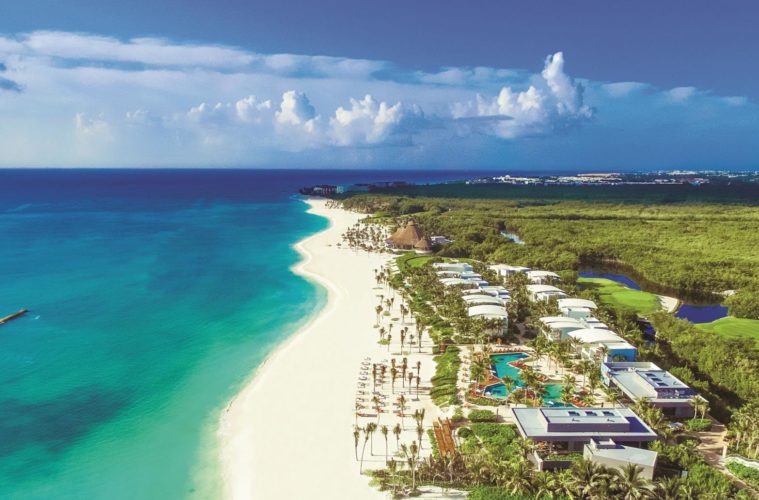Situated at the base of a banyan tree—only a few paces from a walking trail that meanders through the dense mangrove jungle (and only a couple hundred yards from the Greg Norman-designed El Camaleón Mayakoba golf course)—a series of ancient stone stairs leads adventurous visitors underground into Cenote Burrodromo. In this stretch of the Riviera Maya on Mexico’s Yucatan Peninsula, the excavated sinkhole is one of many cenotes (pronounced see-no-tays): subterranean sources of water often connected by a network of tunnels held sacred by the Mayans.
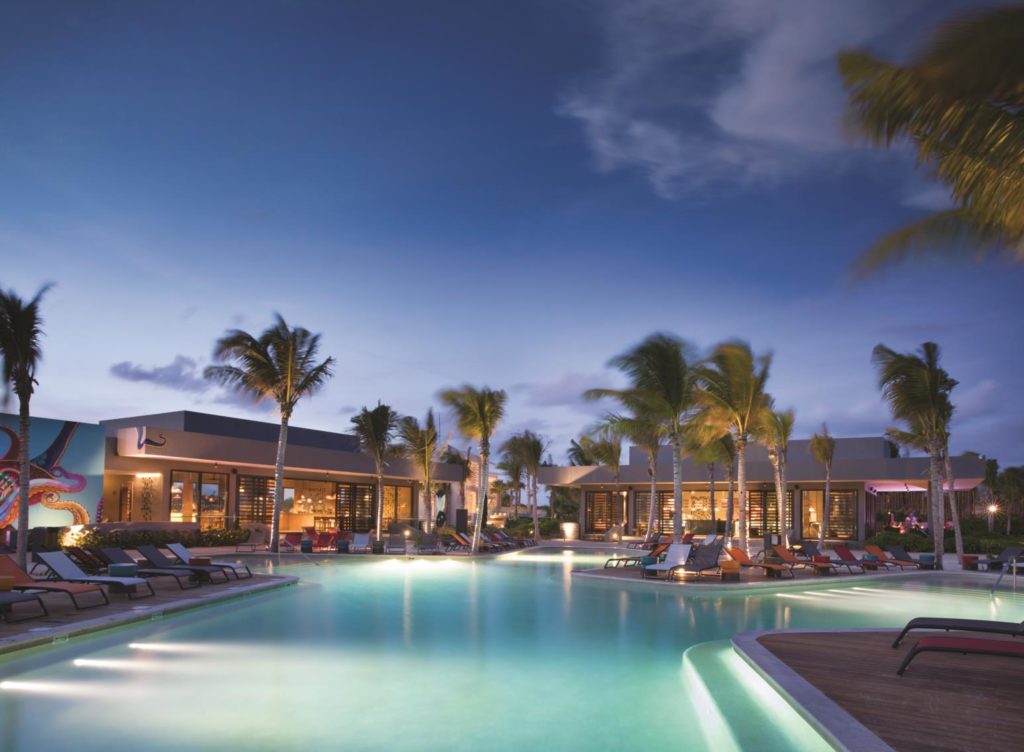

The tranquility of the subterranean space—comprised of a placid underground pool and glimpses of sky through the entrance above—inspired architect Ronald Zürcher to create a reception area at the Andaz Mayakoba Resort Riviera Maya featuring a central pool with oculus above. The oculus, like the entrance to a cenote when viewed from inside, frames the sky but also references the importance of astrology in the ancient Mayan civilization.
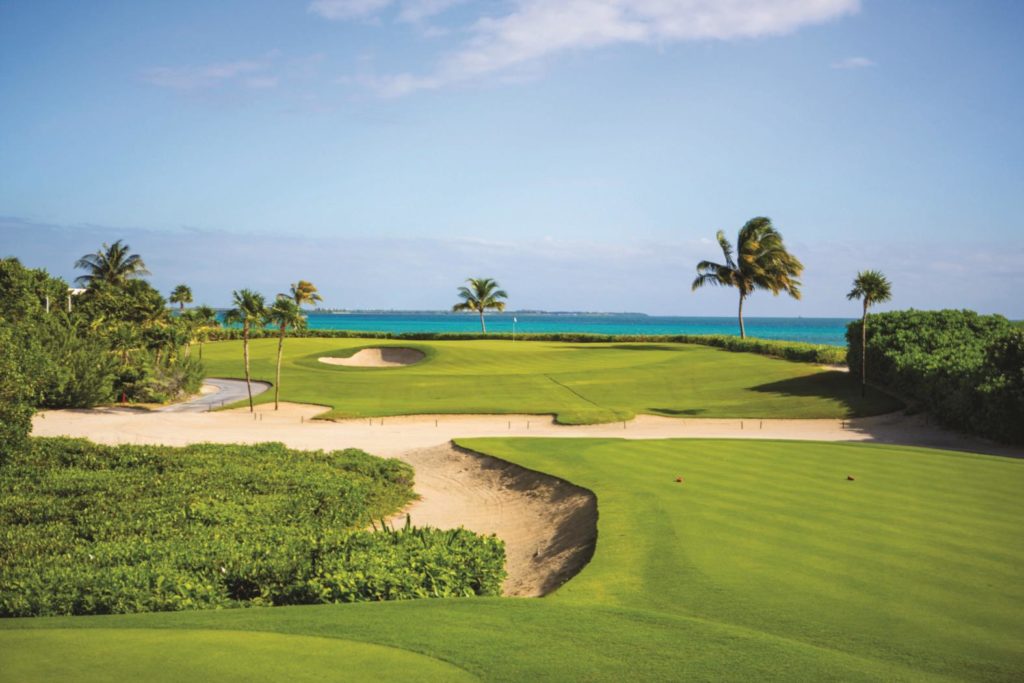

This unique lobby is the first of many examples of how guests can interact with and absorb Mayakoba’s distinct sense of place. For Zürcher, however, the lobby’s cenote-inspired architecture was created specifically to encourage guests to decompress after their travels. “Arriving here and having this amazing sense of water and sky…that,” he says, “is a meditation moment.”
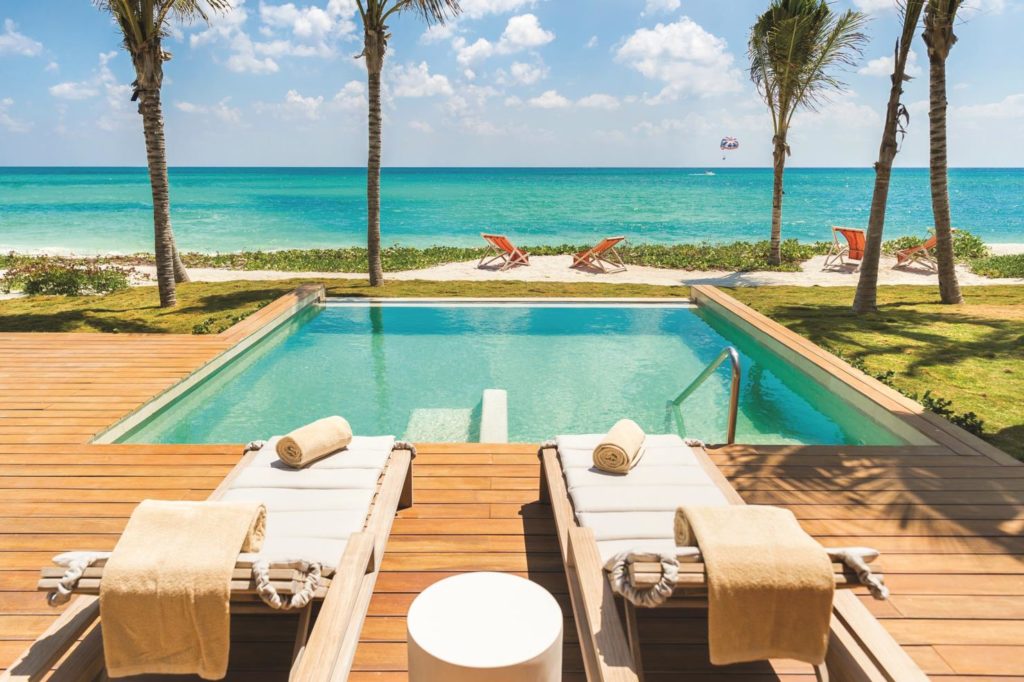

Andaz Mayakoba’s distinctive feel, compared to the trio of other resorts (Banyan Tree, Fairmont, and Rosewood properties) positioned around Mayakoba’s more than two miles of meandering waterways, is, in many respects, a product of Zürcher’s understanding that a successful resort must pay homage to its location. “It’s not my intention to be an archaeologist or a historian,” he explains, “but I always look for the cultural roots of each particular site. Where did we come from? I want to represent and enhance the local culture and the history so we don’t lose that DNA. Otherwise, the local culture will fade in time. My intention is to make it even more powerful.”
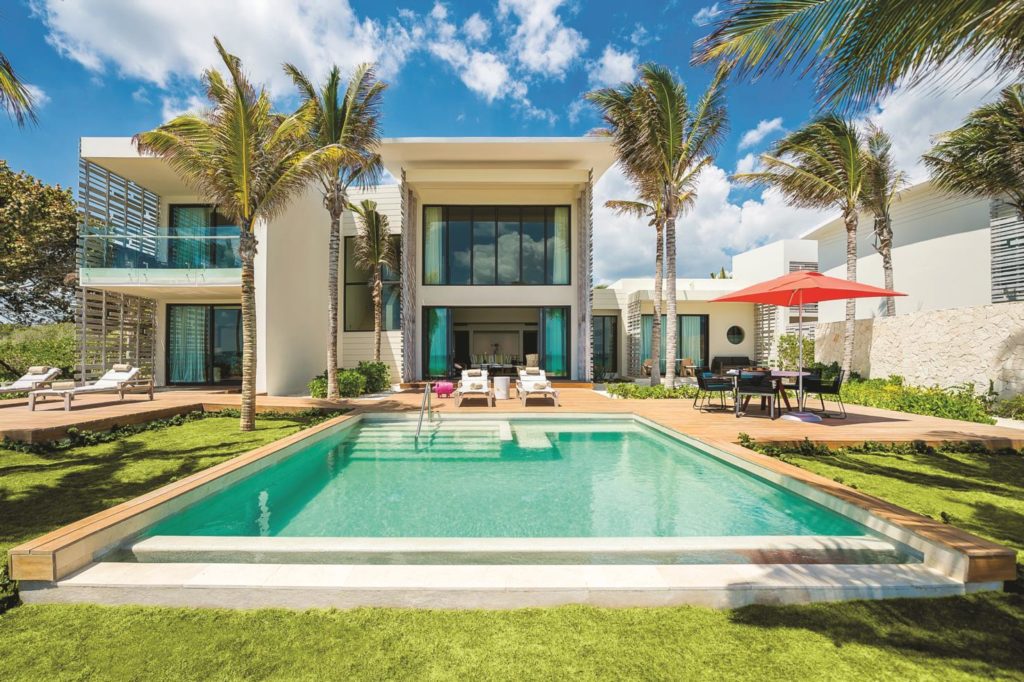

The resort’s 214 guestrooms and suites are spread out across 28 buildings set in three distinct ecosystems—the seashore, the mangroves, and the lagoon—spanning 590 total acres. Those ecosystems are home to more than 200 species of birds, which inspired Zürcher’s design of the aforementioned buildings, specifically their roof geometry. “They have the shape of a wing,” he says. “They’re almost hovering above the building. That’s the lightness of a wing of a bird.”
Although each building features a brightly colored mural painted by a local artist—a decorative feature aimed to promote the region’s art scene, which also makes it easy for guests to find their rooms—they are otherwise finished in natural earth tones and accented by wood or stone. The understated design serves a singular purpose: to encourage guests to look past the buildings. “It’s important that what you look at is not the architecture,” says Zürcher. “Nature is more important than the buildings. I don’t want to compete with nature.”
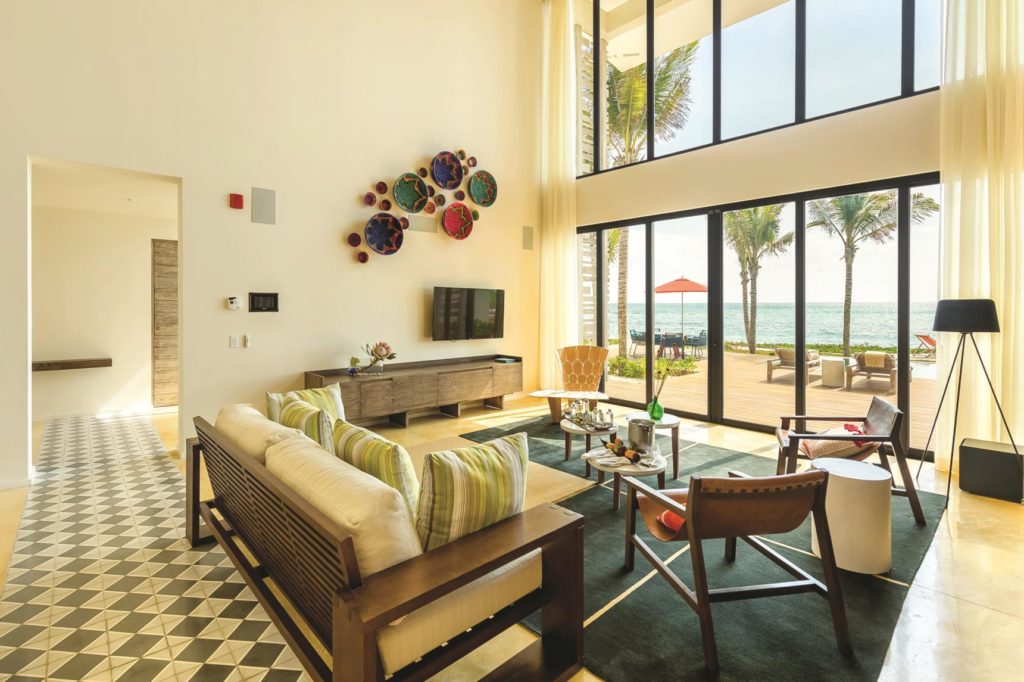

Zürcher’s appreciation for the natural world is longstanding. In fact, the Costa Rican architect recognizes that his fascination with nature, developed as a child living in rural Central America, continually reveals itself in his architectural work today. “When I was little, I lived surrounded by coffee and banana plantations,” he recalls. “While all my friends were playing soccer in the street or in the plaza, I was playing with insects: worms and bees and even scorpions. I was intrigued by organic forms. I studied how a scorpion’s skin looks like leather and how shiny a little beetle could be. I was just interested in textures and forms.”
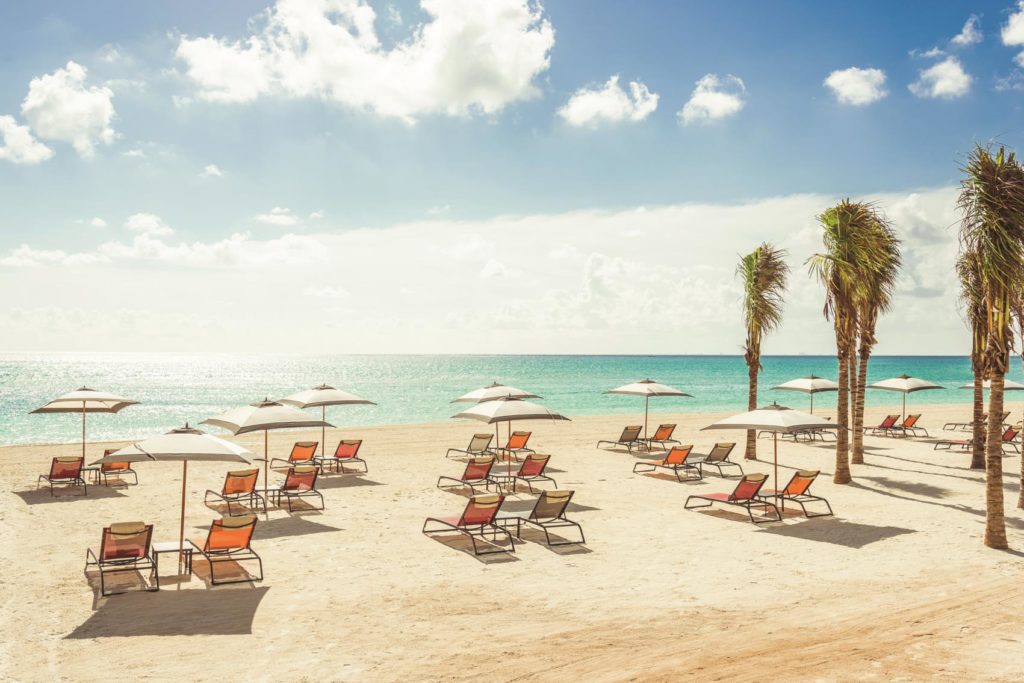

Like the lobby, the resort’s dining spaces also deliver specific ambiances. Casa Amate, for example, Andaz Mayakoba’s fine dining and reservation-only restaurant, mimics the feel of a sophisticated, luxury home—one specifically rooted in Latin culture. “I love the scale of this particular building,” says the architect while seated in the restaurant’s library room. “This is more of an intimate setting. You feel at home here, and that was the intention.”
If Casa Amate’s aesthetic doesn’t wow guests, the cuisine executed by Head Chef Ernesto Torres certainly does. The menu highlights distinctive flavors from many Latin American countries and provides delicious proof that Latin dishes—and Mexican fare in particular—can exist in elevated forms. Elsewhere within Andaz Mayakoba, restaurants like Tinta del Pulpo introduce guests to authentic, albeit unexpected regional flavors. In Tinta del Pulpo’s case, those flavors reside in bottles available from the craft beer menu: a list of more than a dozen artisanal concoctions from nearby breweries.
Across the way, OllaCeviche features a menu that, by the restaurant’s name alone, delivers expected flavors and dishes. Yet the casual poolside establishment may surprise patrons with its creative flavor combinations. “We look forward to giving guests an inspiring taste of Mexico and the Riviera Maya,” says the resort’s Executive Chef Vincent Wallez. That may be the resort’s most significant accomplishment.
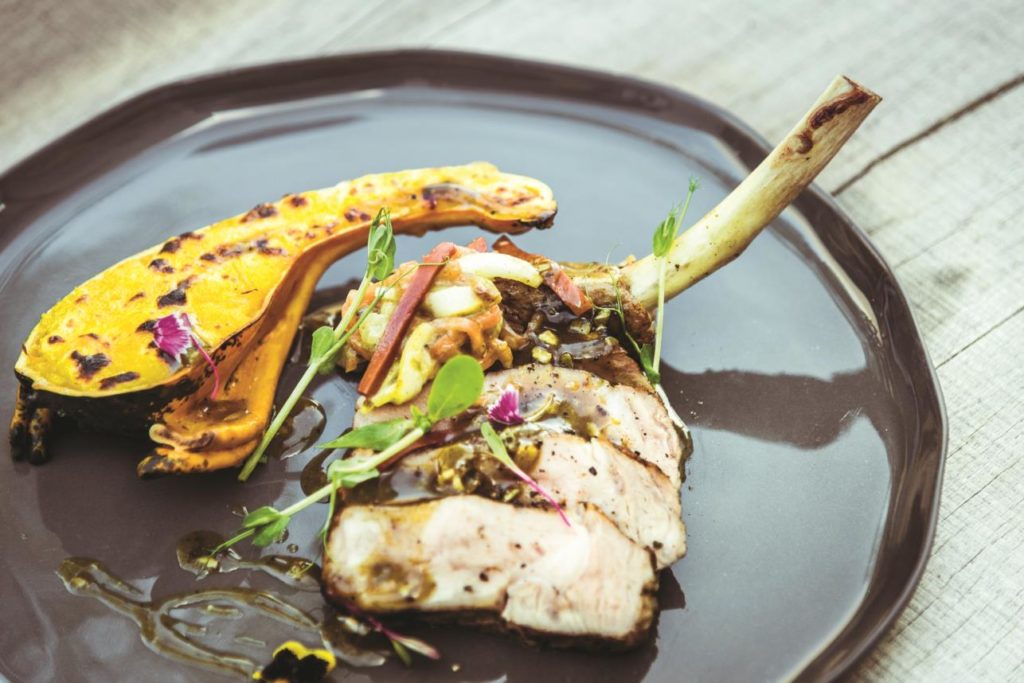

In a region of Mexico where global luxury resort brands compete for discerning travelers’ attention, Andaz Mayakoba Resort Riviera Maya stands out through its commitment to blending into the surrounding natural world and through its food and beverage program, one that delivers authentic Mexican flavors in unexpected ways.
For more information, visit hyatt.com/en-US/hotel/mexico/andaz-mayakoba-resort-riviera-maya/cunam


